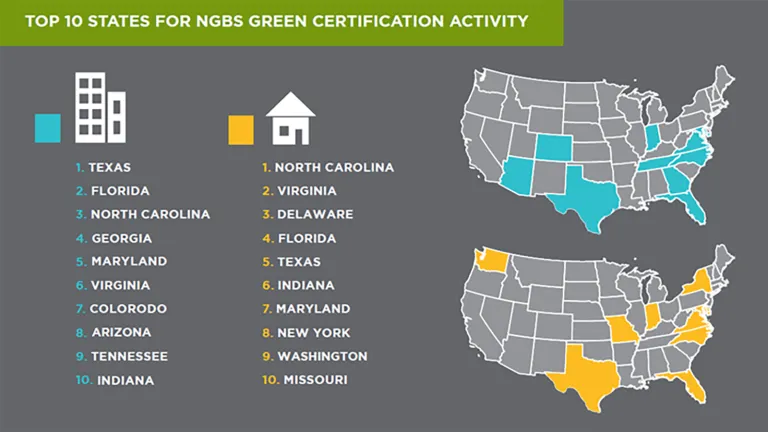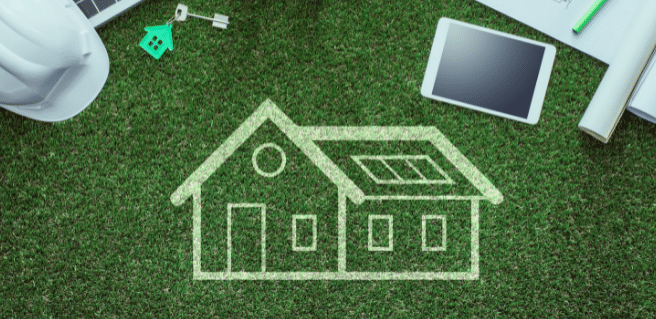Georgia ranks among the top 10 states for National Green Building Standard (NGBS) green certification activity. With 350,000 homes certified to the NGBS since its launch in 2009, builders across the United States are continually adding to the pipeline of NGBS projects. Here’s a snapshot at the top certification activity in 2021 for both single-family and multifamily projects:

Five states rank in the top 10 for both single-family and multifamily projects: Texas, Florida, North Carolina, Maryland and Virginia.
The NGBS provides builders with a national standard to define and measure sustainable multifamily and single-family homes, developments and remodeling projects. It also offers consumers a level of confidence that they are purchasing an independently verified green property.
Builders can learn more about the value of NGBS certification at nahb.org.
To stay current on the high-performance residential building sector, with tips on water efficiency, energy efficiency, indoor air quality and other building science strategies, follow the NAHB Sustainability and Green Building efforts on Twitter.
What is the National Green Building Standard?
NGBS Green certification is an independent, third-party verification for homes, buildings or land development. This certification shows that the home, building or development will achieve high performance in six key areas: Site Design, Resource Efficiency, Water Efficiency, Energy Efficiency, Indoor Environmental Quality and Operation & Maintenance.
These three attributes that are marketable to buyers and renters are the focus:
Healthy Homes
- Providing fresh air ventilation that improves indoor air quality.
- Limiting pollutants and contaminants in the home.
- Preventing moisture problems that can contribute to mold and attract pests.
- Incorporating practices that promote well-being in the buildings we call “home.”
Lower Operating Costs
- Reducing utility costs through cost-effective energy and water efficiency practices.
- Controlling maintenance costs through durable construction and product selection.
- Providing technical and educational resources to ensure the home’s optimum performance.
Sustainable Lifestyle
- Promoting walkability.
- Reducing home maintenance through enhanced durability.
- Preserving natural resources through responsible land development practices.
- Incentivizing Universal Design elements and resilient construction.
